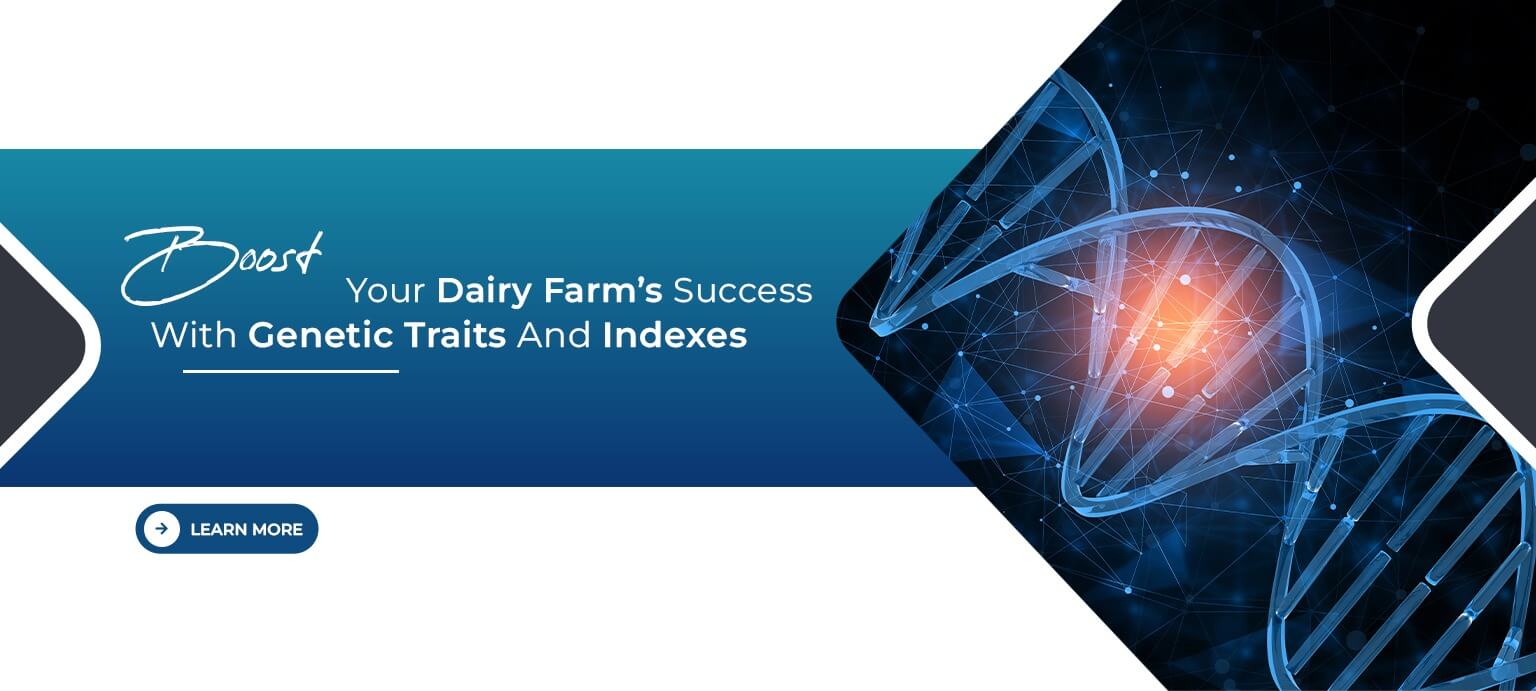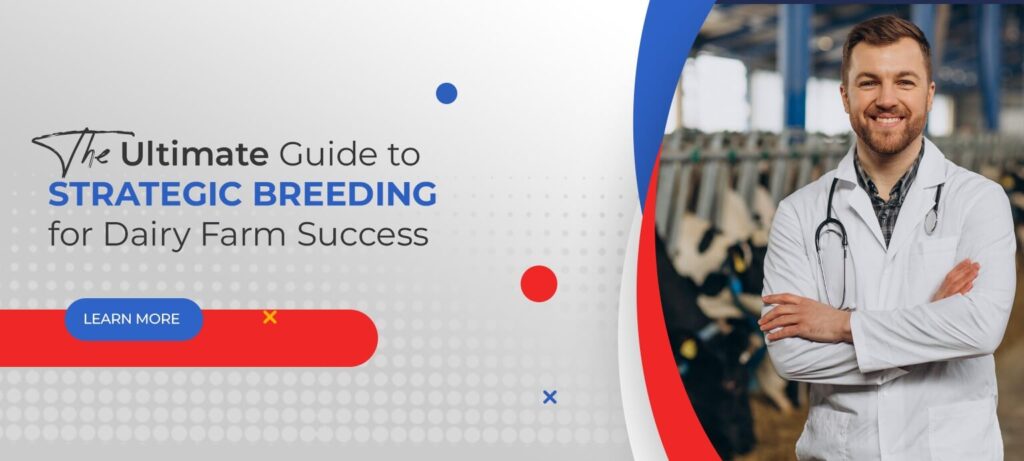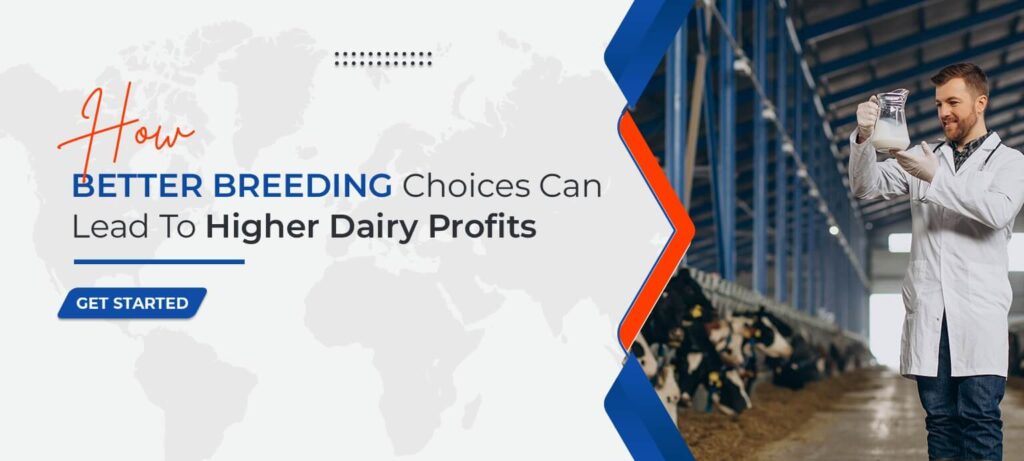In the modern dairy farming landscape, leveraging genetic traits and indexes can be the game-changer you need. This innovative approach not only promises to enhance productivity but also offers a pathway to sustainable farming practices. For dairy farmers eager to optimize their herds, understanding and applying genetic traits and indexes is crucial.
In this blog post, we’ll explore how genetic traits can dramatically boost your dairy farm’s success. You’ll learn about the importance of genetic indexes, how to leverage them for better herd management, and actionable steps to implement these strategies on your farm.
Why Genetic Traits Matter for Dairy Farmers
Boosting Productivity
Genetic traits can significantly impact milk yield, quality, and overall productivity. Farmers who prioritize these traits in their breeding programs often see remarkable improvements in their herd’s performance. For instance, selecting for high milk production genes ensures a steady increase in your farm’s output.
Enhancing Animal Health
Healthy animals lead to a more productive farm. Genetic traits that promote disease resistance, longevity, and fertility can drastically reduce veterinary costs and improve the overall well-being of your herd. Healthier cows also mean fewer losses and higher profitability.
Sustainability and Efficiency
By focusing on genetic traits, you can create a more sustainable farming operation. Efficient cows require fewer resources, produce less waste, and have a smaller environmental footprint. This not only benefits the environment but also reduces operational costs over time.
Understanding Genetic Indexes
What Are Genetic Indexes?
Genetic indexes are numerical values assigned to animals based on their genetic traits. These indexes help farmers predict the future performance of their cows and make informed breeding decisions. Popular indexes include the Net Merit Index (NMI) and the Total Performance Index (TPI).
How Indexes Are Calculated
Indexes are calculated using data from various sources, including milk production records, health traits, and lineage information. Advanced statistical methods and genetic evaluations are used to assign these values, ensuring accuracy and reliability.
The Role of Genetic Indexes in Breeding Programs
Genetic indexes are essential tools in modern breeding programs. They allow farmers to select animals with desirable traits, improving the overall quality of the herd. By consistently using these indexes, you can achieve long-term genetic gains and a more productive farm.
Selecting for Milk Production
High-Yielding Cows
Selecting cows with high milk production traits is a primary goal for many dairy farmers. Genetic indexes like the NMI factor in milk yield, fat, and protein content, helping you choose cows that will maximize your farm’s output.
Balancing Yield with Quality
While yield is important, the quality of milk should not be overlooked. Genetic traits that enhance milk composition, such as higher fat and protein percentages, can make your milk more valuable. Balancing yield with quality ensures a superior product and better market prices.
Improving Animal Health Through Genetics
Disease Resistance
Selecting for genetic traits that promote disease resistance can save your farm significant costs in veterinary care and lost productivity. Look for indexes that include health traits like Somatic Cell Score (SCS) and mastitis resistance.
Longevity and Fertility
Cows with longer lifespans and better fertility rates contribute to a more stable and profitable herd. Genetic indexes often include longevity and fertility traits, allowing you to select animals that will produce more calves and remain productive for longer periods.
Practical Applications
A practical approach to improving herd health involves regularly reviewing genetic indexes and incorporating them into your breeding decisions. This proactive strategy leads to a healthier, more robust herd over time.
Maximizing Efficiency with Genetic Traits
Feed Efficiency
Genetic traits that enhance feed efficiency are highly valuable. Cows that convert feed into milk more efficiently reduce feed costs and increase profitability. Genetic indexes can help identify these efficient animals.
Reduced Environmental Impact
Efficient cows produce less waste and have a smaller environmental footprint. By selecting for traits that promote efficiency, you’re contributing to a more sustainable farming operation.
Cost Savings
The cost savings from improved efficiency can be substantial. Lower feed costs, reduced waste management expenses, and higher milk production all contribute to a more profitable farm.
Leveraging Technology in Genetic Selection
Genomic Testing
Genomic testing has revolutionized the way farmers select for genetic traits. By analyzing an animal’s DNA, you can gain insights into its genetic potential even before it starts producing milk. This early information is invaluable for making informed breeding decisions.
Data Management Systems
Modern data management systems allow you to track and analyze the genetic traits of your herd. These systems integrate with genetic indexes, providing a comprehensive view of your herd’s genetic makeup and performance.
Building a Sustainable Breeding Program
Setting Goals
Clearly defined breeding goals are essential for a successful breeding program. Whether it’s increasing milk yield, improving health traits, or enhancing efficiency, having specific objectives guides your genetic selection process.
Consistent Evaluation
Regularly evaluating your herd’s performance against your breeding goals ensures you’re on the right track. Use genetic indexes and performance data to assess progress and make necessary adjustments.
Long-Term Perspective
Building a sustainable breeding program requires a long-term perspective. Genetic gains accumulate over generations, so patience and consistency are key. Stay committed to your goals and adapt as needed.
The Impact of Genetic Traits on Farm Profitability
Higher Yields, Higher Profits
Selecting for high-yielding cows directly impacts your bottom line. More milk production means increased sales and higher profits. Combining yield with quality further enhances profitability.
Reduced Costs
Healthier, more efficient cows reduce operational costs. Lower veterinary bills, feed costs, and waste management expenses all contribute to a more profitable farm.
Market Competitiveness
A farm that consistently produces high-quality milk has a competitive edge in the market. Premium products attract better prices and loyal customers, ensuring long-term success.
Start Your Journey to a Better Herd Today
Genetic traits and indexes offer a powerful toolset for dairy farmers aiming to enhance productivity, health, and sustainability. By understanding and applying these concepts, you can transform your herd and secure a prosperous future for your farm.
Whether you’re just starting or looking to refine your breeding program, the key is to stay informed, set clear goals, and remain committed to continuous improvement. Embark on your genetic selection journey today and experience the remarkable benefits it brings to your dairy farm’s success.
If you’re a farmer aiming to enhance your dairy herd’s productivity and health through advanced genetic traits and indexes, Accuvance India is your ideal partner. We offer comprehensive solutions and expert guidance tailored to your specific needs. Accuvance India stands out as a leader in bioscience solutions, providing cutting-edge assisted reproductive technology to dairy clients and farmers across India. Our services are delivered from the state-of-the-art Accuvance Dairy Genetics and Research Centre (AGRC), ensuring you receive the most advanced support available.









